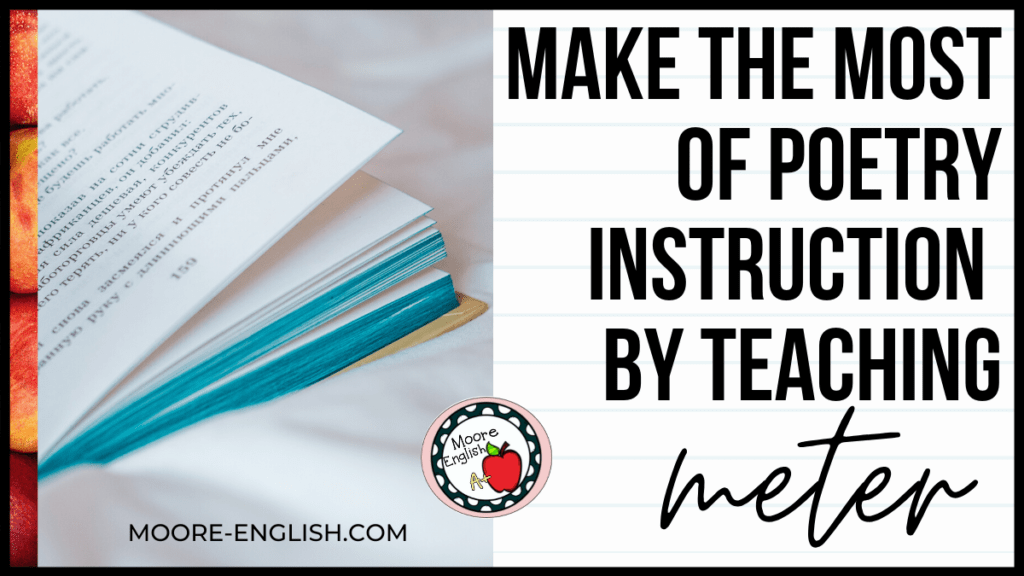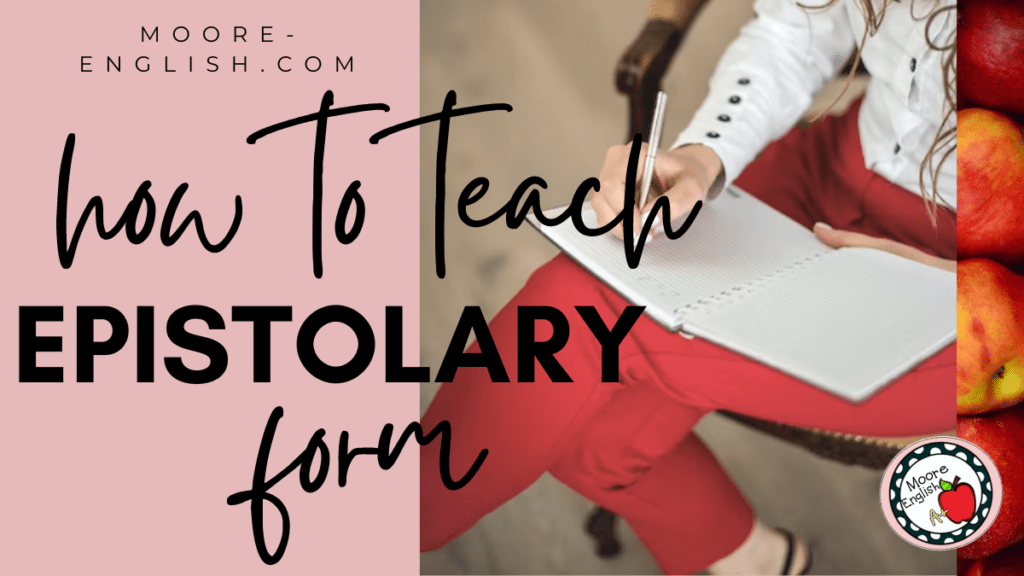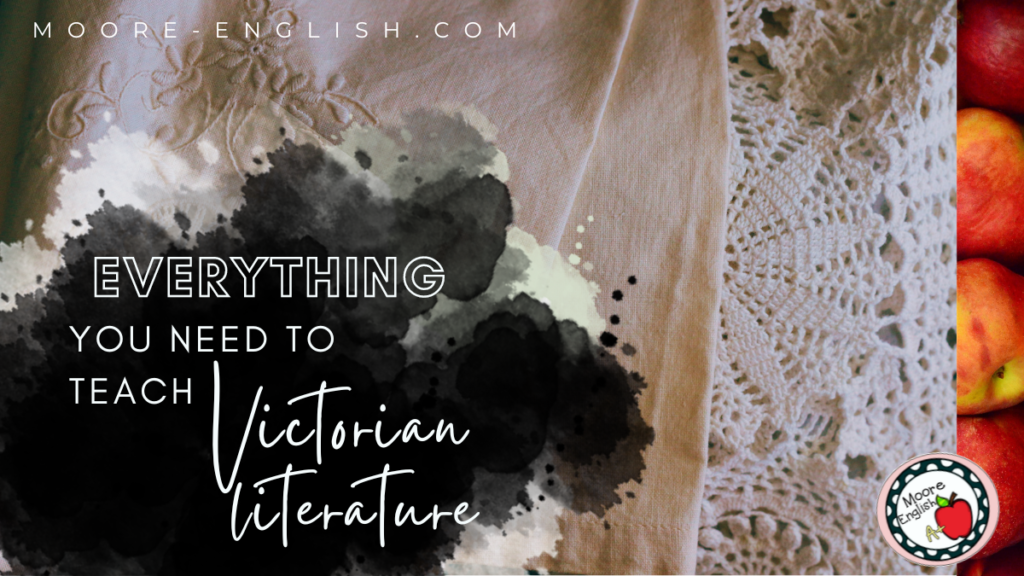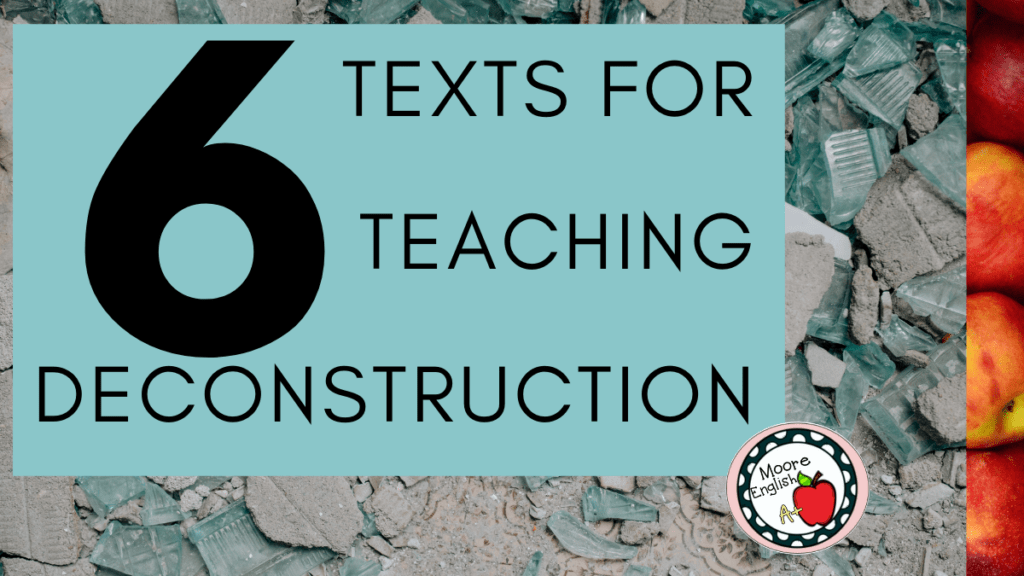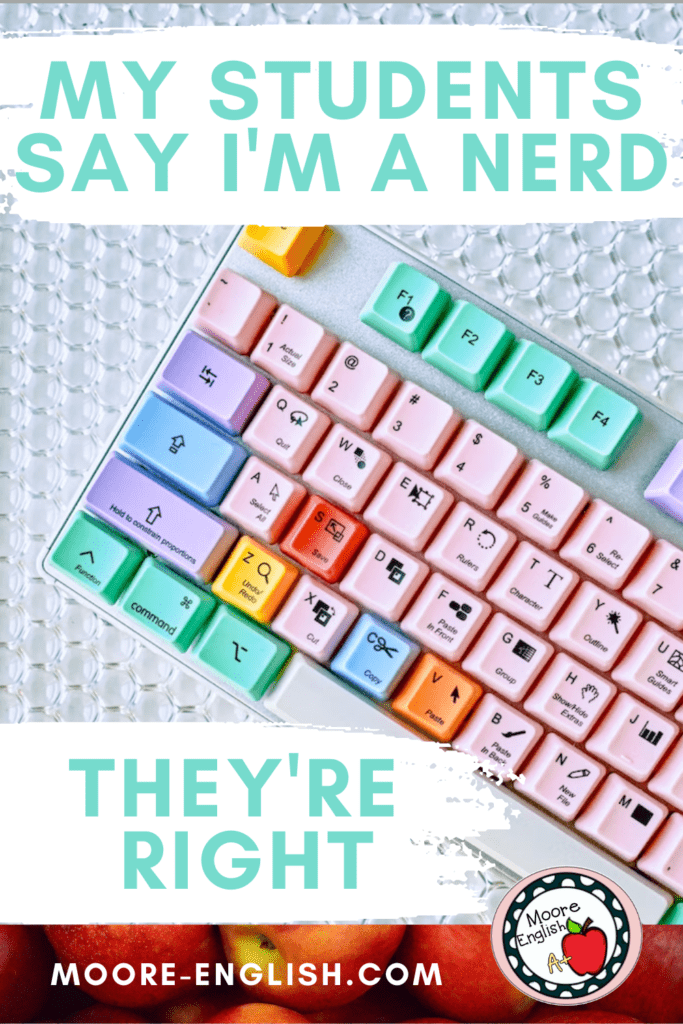Last year, our student council did a Valentine’s Spirit Week. On Wednesday, we wore pink (obviously), but on Thursday, we dressed as our romantic “type.” Some students swapped clothes with their significant others. A few students dressed as superheroes or sports stars. I dressed like Sheldon Cooper. He is very much my type.
This choice did nothing to change my students’ opinion of me. In their minds, I spend the weekends watching Nova, knitting, talking to my mom, and reading a tall tower of dusty, smelly books. Sometimes, I suspect, they believe I read by torch light, cackling as I think of new ways to torture them. They think I talk to my dog more often than I talk to other people.
I mean, I don’t really cackle, but I do love a smelly book.
In general, nerdy posts don’t bring a lot of traffic to Moore English. SEO mavens and blog whisperers will tell you that every post should serve your audience. “Only write what they’re looking for. Only write to show your audience how you can solve their problems.” Yawn.
SEO is great and all, and it does help pay the bills.
But sometimes I have to write a deep-dive nerdy post. When I write one of these posts, I assume the audience is the five other people watching Nova. And that’s fine. At the end of the day, these are the posts that make my heart sing, and I wanted to highlight them for you. (#2 is maybe the nerdiest thing I’ve ever written. And I loved it. so. much.)
This post this post may contain affiliate links. Please read the Terms of Use.
Make the Most of Poetry Instruction by Teaching Meter
Poetic meter is a challenge for many teachers. But incorporating meter into poetry instruction brings new light to old texts. These strategies will help!
How to Teach Epistolary Form in High School ELA
My favorite scene in The Great Gatsby is when Jordan recounts the story of Daisy’s wedding. There’s something poignant and powerful about the image of Daisy wadding up Gatsby’s letter, putting on her pearls, and marrying Tom anyway. I think this scene is where my love of epistolary form began. After I read this scene with students, they write Gatsby’s letter and then “send” it to one another. Students “mail” their letters in paper airplanes and then respond to one another from the perspective of Daisy. It’s a memorable lesson and a great writing activity. While The Great Gatsby isn’t
12 Texts for Introducing Marxist Criticism
When my students study literary criticism, I usually introduce Marxist criticism after feminist criticism. In part, I introduce these two lenses in close order because they are both political lenses. They’re not political in the sense of partisan politics. But they both deal with how literature navigates issues of power and privilege. However, I usually introduce Marxist criticism after feminist criticism because students stumble over the “Marxist” title. Students know Karl Marx from their social studies classes. And they know about communism from reading The Crucible. Sometimes that leads students to believe that Marxist criticism is all about communism. So
Everything You Need to Teach Regionalism
The first few times I taught American literature, I skipped regionalism. Each time, I told myself that I just didn’t have time. However, in truth, I didn’t have a good definition for regionalism or a way to explain its impact to my students. However, two years ago, I committed to making space for regionalism in my American literature class. And, wow, I am shocked at how much of a difference this has made for my students. Incorporating regionalism has had three key benefits for my students: First, it really helps students bridge the gaps between Romanticism, Realism, and Modernism. Second,
9 Titles for Introducing Victorian Literature in High School ELA
Helping high school students understand Victorian literature can be tricky. As much as my students love Harry Styles, it’s tough to get them excited about a British literary movement from more than one-hundred years ago. Knowing that it will be challenging to get students excited, I try to structure our study of Victorian literature around a few essential questions. At my school, this instructional spiral would fit into twelfth grade. Firstly, what does social justice look like? Secondly, how can literature become a force for change? Next, are readers obligated to empathize with literature? Overall, what is the best way
How to Introduce Deconstruction in High School ELA
Literary criticism is one of my favorite ways to approach a text. Once I’ve introduced literary criticism and students have grappled with the basics, they really start to engage in creative thinking. I am constantly blown away with students’ abilities to see texts in new, innovative ways. When I am fortunate to have a group of students that really takes to literary criticism, I challenge them by introducing deconstruction. To be clear, this is not a critical lens that I always teach. Instead, this is the *bonus* lens I use for students that are really rocking with literary criticism. Where
Nerdy Honorable Mentions
Which nerdy post is your favorite? What nerdy topic should I write about next? If you’re looking for a few more nerdy posts, here are some honorable mentions:
- How to Teach Deliberate Ambiguity
- 7 Inspired Ways to Teach Pride and Prejudice
- How to Make Beowulf Relevant for Your Students


